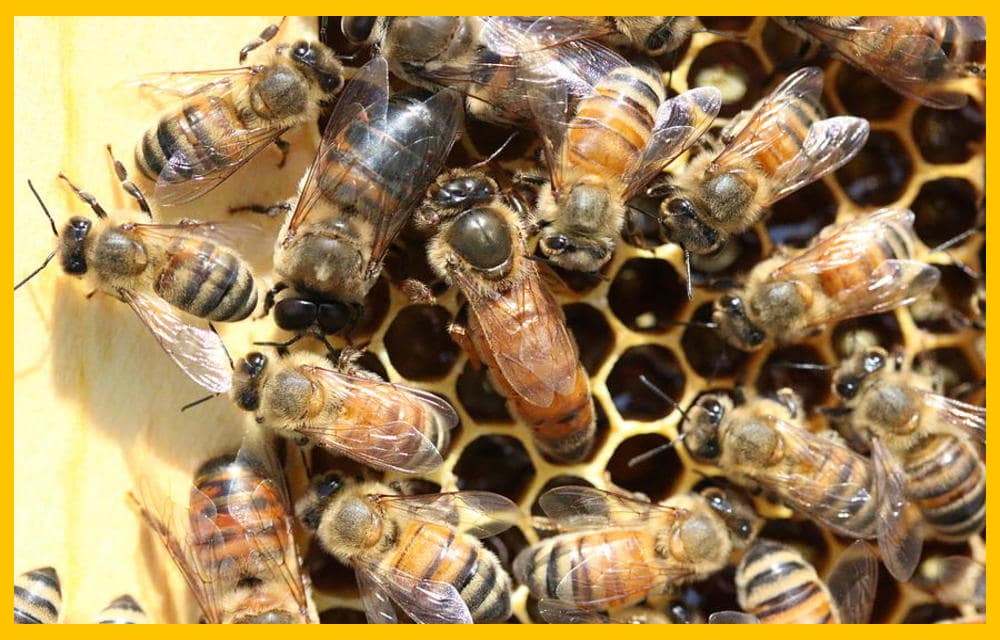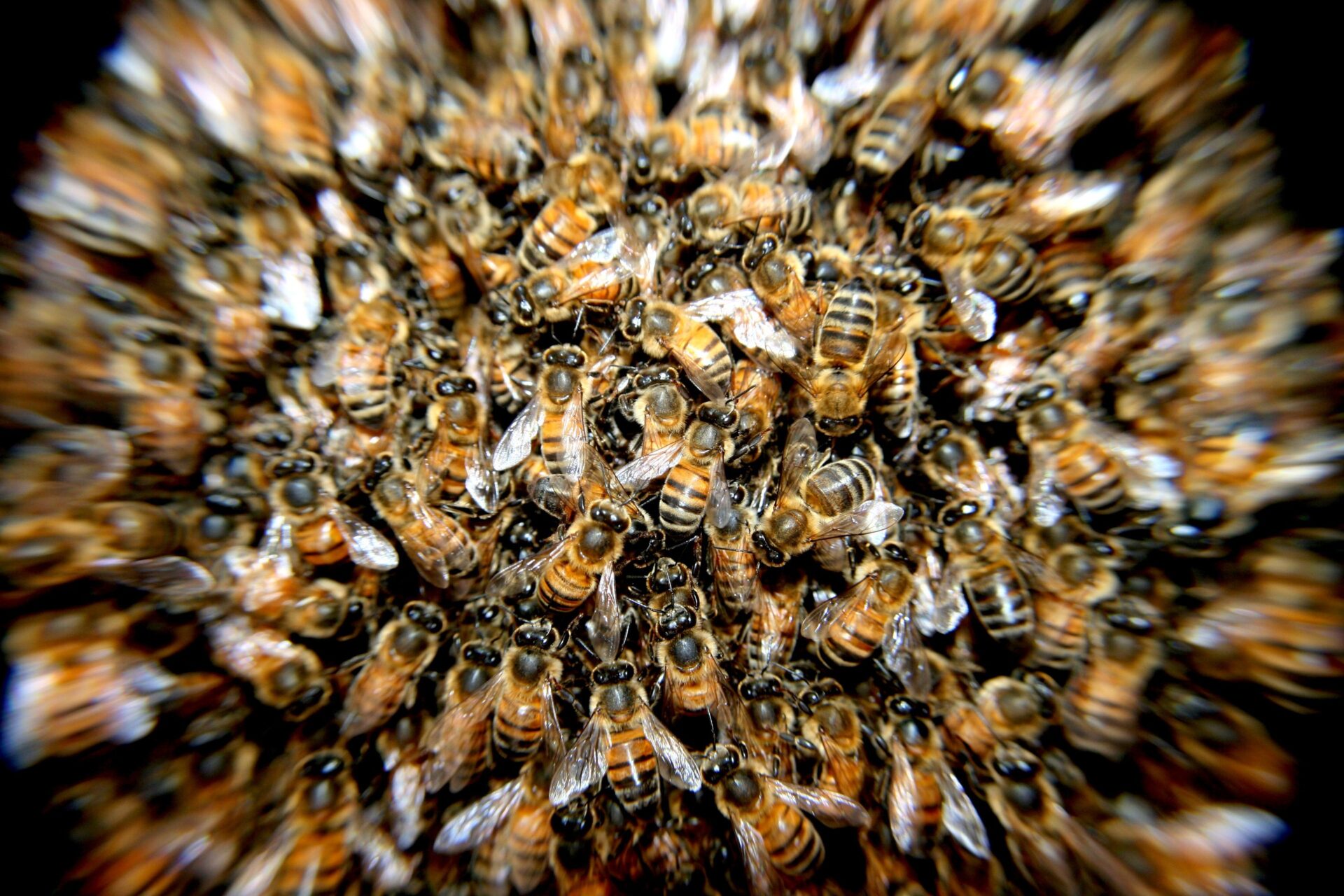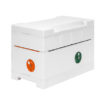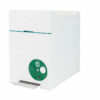Honeybees are social insects, which means they live together in well-organized groups. Each honeybee colony consists of a queen, several hundred drones, and several thousand worker bees, and they must all work together to ensure the survival of the hive. The cooperation required to maintain this survival is what makes honeybees one of the most fascinating creatures in nature.
Index
Queens in the honeybee colony

The new queens are initiated into the hive for three main reasons. The first reason is that the hive is full of honey (sealed), and the current queen no longer has space to lay eggs. The bees will then initiate the swarming process. They will build swarm cells for the new queens that hang from the bottom of the frames. They will also reduce the amount of food they are giving to the old queen so that she no longer weighs as much and is able to fly. As soon as the new queen cells have been made, the swarm will leave the hive with the old queen, leaving enough bees behind to take care of the queen cells and larvae.
The second reason is for the replacement of the current queen. Each queen emits her own pheromone, and as she ages, that pheromone decreases and tells the other worker bees that it is time to replace her with a new queen. They will usually start queen cells on the side of the comb, instead of on the bottom of the frame like with swarm cells. There will also only be a few replacement cells, whereas with swarm cells there can be many. Shortly after the new queen is available, the worker bees will “ball” the old queen by clustering tightly around her. This raises her body temperature, causing her to overheat and die.
The third reason is for emergency queen replacement. Sometimes the queen may be accidentally killed or removed, so the worker bees will select the youngest worker larvae to produce emergency queens. Because these queens are raised in normal worker cells that are modified to hang vertically on the comb surface, they are usually smaller than queens produced for swarming or replacement.
About a week after the virgin queen emerges from her cell, she will leave the hive and fly to a “drone congregation area” where she will mate with several drones from various hives in the area. This ensures that different genetics are spread across different hives. If bad weather forces the queen to stay inside the hive for several days and she is unable to fly out to mate, she will become a drone-laying queen and may cause the demise of the hive if she is unable to resume egg laying.
Immediately after mating, the queen will return to her hive and within 2-3 days will begin laying eggs. The queen is easily recognizable by the worker bees and drones due to her elongated abdomen, which can reach the bottom of each cell to deposit the egg. A queen will determine the size of the cell before laying the egg; if it is a larger cell, she will lay an unfertilized egg that will become a drone, whereas if it is a smaller cell she will lay a fertilized egg. Queens lay the most eggs in late spring and early summer, laying up to 1,500 eggs per day. They will gradually decrease the number of eggs laid in early October as the weather becomes cooler, and will produce few or no eggs until the beginning of the next spring. A good queen will produce over 250,000 eggs during her 1-2 year lifespan.
Although the queen bee and worker bee come from the same fertilized egg, there are several differences between the two bees. The queen is able to produce both fertilized and unfertilized eggs, while if a worker bee begins laying eggs because there is no queen, she will only be able to lay unfertilized eggs. Queens are larger than worker bees, but they have a shorter wing span. The wings of worker bees almost reach the abdomen when folded against their body. The queen does not have functional wax glands on her abdomen or pollen baskets on her legs. Her stinger is curved and longer than that of a worker, with fewer barbs. She is able to retract her stinger after stinging, whereas a worker bee will fly away leaving the stinger and venom sac behind. The queen can also live for several years, whereas the worker bee will die within a few weeks.
The only job the queen has is to lay eggs. For most of the queen’s life, the only time she leaves the hive is for the mating flight. Worker bees feed the queen, clean her, and take care of her waste.
Drones

Male bees are called drones and are usually present only during spring, summer, and early autumn. They typically rely on worker bees for their food and do not have stingers, pollen baskets, or wax glands. Their main function is to fly out and mate with queens. Although they are generally thought to have no other purpose in the hive, drones cover the brood and help keep it warm. This allows more worker bees to leave the hive and forage for food. Once the weather starts to get colder in the fall, worker bees will force the drones out of the hive where they will die of starvation. This can also happen during lean periods when there is not much nectar available.
Worker bees

Female worker bees are responsible for all other tasks in the hive. Younger bees are responsible for all the indoor hive tasks, including cleaning cells and preparing them for the queen to lay eggs again, assisting the queen, feeding and caring for growing larvae, removing dead bees inside the hive, building new combs, capping combs, filling cells with pollen, fanning nectar to evaporate excess moisture, repairing cracks in the hive, and sealing everything with propolis.
Older worker bees are responsible for collecting nectar, pollen, propolis, and water needed inside the hive. There are several bees acting as guards, monitoring the entrance to ensure no intruders are trying to enter. They will emit a certain pheromone to alert all other bees of danger. Once the nectar flow begins, most bees will go out to forage for food and bring back the nectar, leaving only a few bees inside the hive to care for the brood.
Sometimes, when a bee colony becomes queenless, the ovaries of several worker bees will develop, and they will start laying eggs. However, these eggs are unfertilized, so if the beekeeper does not provide the hive with a new queen, the hive will die. The easiest way to tell if this is happening is when the frames have many eggs inside them, instead of just one cell with a single egg at the base. Although there are queen cells in the hive during this period, it is generally always better to scrape off the queen cells and introduce a new queen into the hive because most likely the queen cell will be from an unfertilized egg and will not become a queen.
These are just some of the characteristics of the different types of bees that make up a colony.







